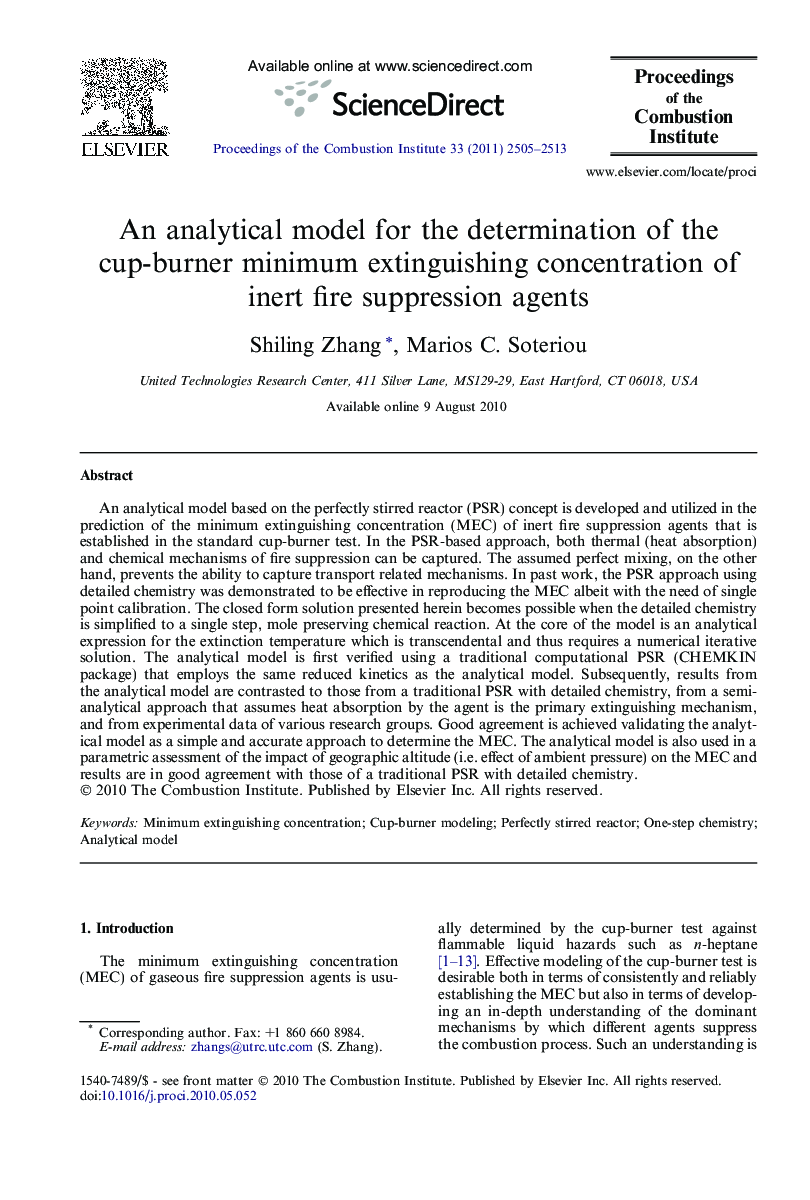| Article ID | Journal | Published Year | Pages | File Type |
|---|---|---|---|---|
| 240706 | Proceedings of the Combustion Institute | 2011 | 9 Pages |
An analytical model based on the perfectly stirred reactor (PSR) concept is developed and utilized in the prediction of the minimum extinguishing concentration (MEC) of inert fire suppression agents that is established in the standard cup-burner test. In the PSR-based approach, both thermal (heat absorption) and chemical mechanisms of fire suppression can be captured. The assumed perfect mixing, on the other hand, prevents the ability to capture transport related mechanisms. In past work, the PSR approach using detailed chemistry was demonstrated to be effective in reproducing the MEC albeit with the need of single point calibration. The closed form solution presented herein becomes possible when the detailed chemistry is simplified to a single step, mole preserving chemical reaction. At the core of the model is an analytical expression for the extinction temperature which is transcendental and thus requires a numerical iterative solution. The analytical model is first verified using a traditional computational PSR (CHEMKIN package) that employs the same reduced kinetics as the analytical model. Subsequently, results from the analytical model are contrasted to those from a traditional PSR with detailed chemistry, from a semi-analytical approach that assumes heat absorption by the agent is the primary extinguishing mechanism, and from experimental data of various research groups. Good agreement is achieved validating the analytical model as a simple and accurate approach to determine the MEC. The analytical model is also used in a parametric assessment of the impact of geographic altitude (i.e. effect of ambient pressure) on the MEC and results are in good agreement with those of a traditional PSR with detailed chemistry.
